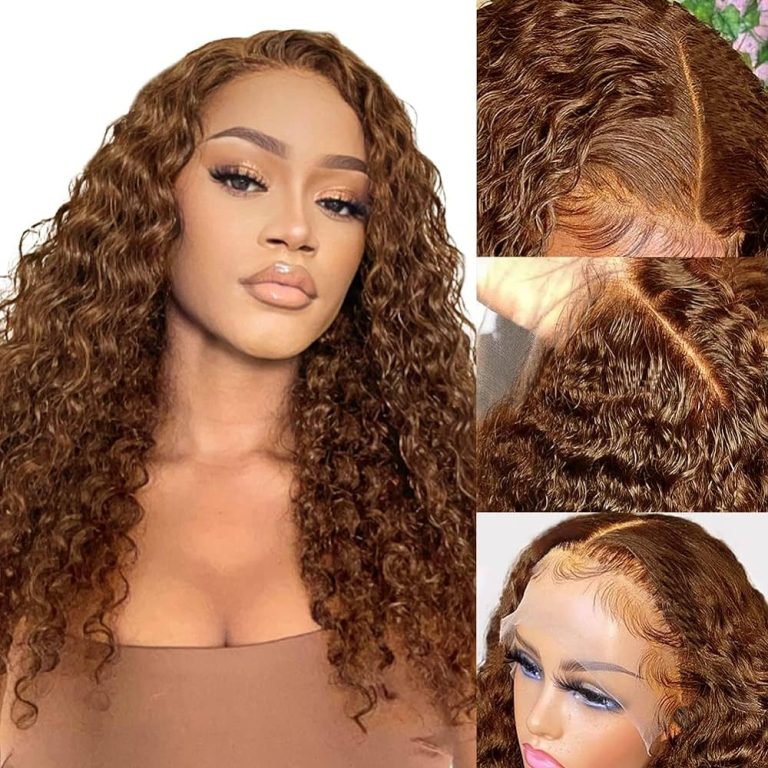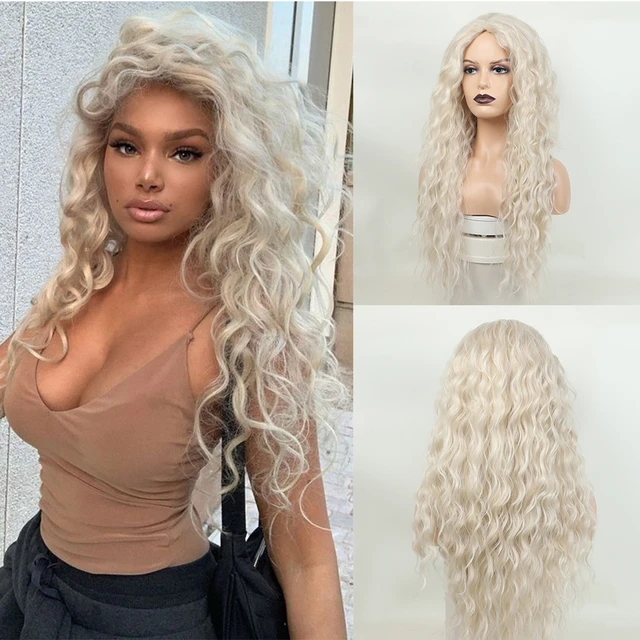
Wig Lace: Revolutionizing Natural-Looking Hairpieces
Understanding Wig Lace
Wig lace has transformed the world of hairpieces. It creates an incredibly natural appearance. This guide explores everything about wig lace. Discover types, application techniques, and maintenance tips. Learn how wig lace enhances the realism of wigs and hairpieces.
What Is Wig Lace?
Wig lace forms the foundation of modern, natural-looking wigs. It consists of a fine, sheer material. Manufacturers hand-tie individual hairs to this lace base. The lace mimics the appearance of a natural scalp. It allows for styling versatility and realistic partings. Wig lace comes in various colors to match different skin tones. High-quality lace appears nearly invisible when applied correctly. This creates the illusion of hair growing directly from the scalp.
Types of Wig Lace
Several types of wig lace exist, each with unique properties. Swiss lace offers extreme sheerness and durability. It’s often used in high-end wigs and hairpieces. French lace provides a balance of durability and transparency. This type suits daily wear and active lifestyles. HD lace, or high definition lace, offers the most invisible appearance. It virtually disappears against the skin, creating an ultra-natural look. Some wigs feature a combination of lace types. This maximizes both durability and natural appearance.
Lace Front Wigs
Lace front wigs revolutionized the wig industry. They feature a strip of lace at the front hairline. This lace extends from ear to ear. Lace front wigs allow for styling away from the face. They create a natural-looking hairline and parting. These wigs blend seamlessly with the wearer’s skin. They offer versatility in styling without full lace coverage. Lace front wigs suit those seeking a natural look with easy application. They come in both human hair and synthetic options.
Lace front wigs offer several benefits over traditional wigs. They provide a more natural and undetectable hairline. Wearers can style the hair away from the face confidently. Lace fronts allow for various parting options. This versatility mimics the styling options of natural hair. These wigs often feel lighter and more breathable than full wigs. They suit hot climates and active lifestyles well. Lace front wigs blend well with the wearer’s own hairline. This creates a seamless transition for a truly natural look.
Full Lace Wigs
Full lace wigs represent the pinnacle of wig technology. The entire wig cap consists of lace material. This allows for parting and styling in any direction. Full lace wigs offer unparalleled versatility. Wearers can create high ponytails or updos easily. These wigs provide the most natural appearance from all angles. Full lace wigs often use high-quality human hair. They require careful application and maintenance. These wigs suit those seeking maximum styling flexibility.
Full lace wigs offer extensive customization options. Wearers can cut and style the wig to their preferences. The lace can be trimmed to fit the individual’s hairline perfectly. Many choose to add baby hairs for an even more natural look. Plucking the hairline creates a realistic density gradient. Some opt to bleach the knots for an invisible lace appearance. Customization allows full lace wigs to truly become one’s own.
Applying Wig Lace
Proper application ensures a natural, secure fit for lace wigs. Start by preparing the natural hairline. Braid or slick back natural hair for a flat base. Clean the hairline with alcohol to remove oils. This helps the adhesive bond properly. Cut the lace to fit the natural hairline if needed. Leave a small amount of excess for adjustments. Apply a thin layer of wig adhesive to the hairline. Allow it to become tacky before applying the wig.
Carefully place the wig lace along the hairline. Press gently to secure the bond. Use a rat-tail comb to perfect the hairline placement. Apply light pressure with a silk scarf to set the adhesive. Style the wig as desired, blending it with any visible natural hair. For added security, use wig clips or tape. These work well for active lifestyles or windy conditions. Proper application creates an undetectable, natural-looking hairline.
Maintaining Wig Lace
Proper maintenance extends the life and appearance of lace wigs. Clean the lace regularly to prevent product buildup. Use a gentle, alcohol-free cleanser designed for lace wigs. Apply the cleanser with a soft brush or cloth. Avoid harsh scrubbing, which can damage the delicate lace. Rinse thoroughly with cool water to remove all residue. Allow the lace to air dry completely before styling.
Store lace wigs properly when not in use. Use a wig stand to maintain the wig’s shape. Cover the wig with a silk or satin scarf to prevent dust accumulation. Keep lace wigs away from heat sources and direct sunlight. Avoid storing in plastic bags, which can trap moisture. Handle the lace gently to prevent tearing or stretching. Regular maintenance ensures lace wigs remain natural-looking and durable.

Choosing the Right Wig Lace
Selecting the appropriate wig lace depends on several factors. Consider skin tone when choosing lace color. The lace should match the scalp as closely as possible. Transparent lace works well for many skin tones. However, darker skin tones may require tinted lace for a natural blend. Evaluate the desired level of durability. Swiss lace offers sheerness but requires gentle handling. French lace provides more durability for active lifestyles.
Consider the intended use and frequency of wear. Daily wear demands more durable lace options. Occasional use allows for more delicate, ultra-sheer lace. Think about personal styling preferences. Full lace wigs offer maximum versatility but require more maintenance. Lace front wigs provide a natural hairline with easier application. Choose a lace density that matches personal preference. Lighter densities offer a more natural look. Heavier densities provide fullness and drama.
Wig Lace Innovations
The wig industry continuously innovates lace technology. New lace types emerge, offering improved invisibility and durability. Some manufacturers develop lace with built-in UV protection. This prevents discoloration and extends the wig’s lifespan. Advances in lace production create even finer, more invisible textures. These innovations blur the line between wig and natural hair further.
Some companies now offer customizable lace colors. This allows for perfect matching to individual skin tones. Pre-plucked and pre-customized lace wigs gain popularity. These save time and effort in achieving a natural look. Innovations in adhesive technology improve wig security and comfort. New adhesives offer stronger holds while remaining gentle on skin. As technology advances, wig lace becomes increasingly undetectable and user-friendly.
The Impact of Wig Lace on the Beauty Industry
Wig lace has revolutionized the beauty and fashion industries. It allows for more realistic and versatile hair transformations. Celebrities often use lace wigs to change their look dramatically. This influences fashion trends and consumer preferences. The film and television industries rely heavily on lace wigs. They enable quick character transformations without damaging actors’ natural hair.
Wig lace has made high-quality wigs more accessible to the general public. It offers a solution for those experiencing hair loss or thinning. Cancer patients find comfort and confidence in natural-looking lace wigs. The drag and entertainment communities embrace lace wigs for performances. They allow for elaborate hairstyles and quick changes. Wig lace has expanded the possibilities for self-expression through hair.
Ethical Considerations in Wig Lace Production
The production of wig lace raises ethical considerations. Many high-quality lace wigs use human hair. This demands responsible sourcing practices. Ethical manufacturers ensure fair compensation for hair donors. They maintain transparent supply chains. Some companies focus on using ethically sourced synthetic materials. These offer animal-free and environmentally friendly alternatives.
Labor practices in wig lace production also merit attention. Hand-tying lace wigs requires skilled labor. Ethical companies ensure fair wages and safe working conditions. Some manufacturers invest in communities where production occurs. They provide education and economic opportunities. Consumers increasingly demand transparency in wig production. This pushes the industry towards more ethical practices overall.

DIY Lace Wig Customization
Many wig enthusiasts customize their lace wigs at home. This allows for a truly personalized look. Plucking the hairline creates a natural density gradient. Use tweezers to remove individual hairs carefully. Focus on creating a realistic, irregular hairline. Bleaching the knots makes the lace even more invisible. This process lightens the dark knots where hairs attach to the lace. Use a gentle bleach solution and work carefully to avoid damage.
Adding baby hairs enhances the natural appearance of the hairline. Use a small brush or toothbrush to create wispy hairs. Secure them with gel or edge control product. Trimming the lace allows for a perfect fit. Cut small sections at a time, following the natural hairline. Tinting the lace helps match it to the wearer’s skin tone. Use fabric dye or special lace tint for best results. DIY customization transforms a standard lace wig into a unique, personalized piece.
Wig Lace in Popular Culture
Wig lace has become a prominent topic in popular culture. Social media influencers showcase lace wig transformations. They share application techniques and styling tips. Music videos and red carpet events feature elaborate lace wig styles. This exposure normalizes wig wearing and celebrates its artistry. Reality TV shows often discuss or feature lace wig drama. This brings wig terminology into everyday conversations.
Lace wigs appear in discussions about Black hair and culture. They offer versatility and protection for natural hair. Some view lace wigs as a form of cultural expression. Others debate their impact on beauty standards. The visibility of lace wigs in media affects public perception. It challenges traditional notions of “natural” hair. Wig lace has become a topic of both celebration and critique in popular discourse.
Conclusion: The Transformative Power of Wig Lace
Smart technology integration may enter the wigs lace world. Imagine lace that changes color to match skin tone perfectly. Or lace with built-in styling tools for effortless changes. Biodegradable and eco-friendly lace materials gain attention. These address environmental concerns in wig production. As technology advances, wig lace will likely become even more realistic and multifunctional. The future promises exciting innovations in this dynamic field.
Wigs lace has transformed the world of hairpieces dramatically. It offers unparalleled naturalism and versatility. From lace front to full lace wigs, options abound for every need. Proper selection, application, and maintenance ensure optimal results. Customization allows for truly personalized, undetectable wigs. The cultural impact of wigs lace extends beyond mere aesthetics. It influences fashion, self-expression, and identity. As technology advances, wigs lace continues to blur the line between natural and artificial hair. Embrace the transformative power of wigs lace for endless styling possibilities.



